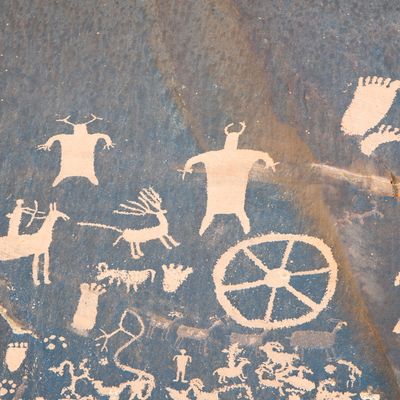
Humans have incredible creative potential. Our knack for creating megacities, double-decker airplanes, cures for hundreds of diseases, symphonies, and virtual reality games, among other remarkable inventions, attests to our capacity to imagine possibilities and make them real. We identified this human potential long ago, when we named our own species “sapiens,” which means “wise.”
And yet it’s a moniker we don’t always live up to. On the contrary, it’s tempting to take a much bleaker view of humanity. Today, human-created climate change threatens most life forms on Earth; violent conflicts over nationalism, religion, and power rage on nearly every continent; and daily acts of economic and political injustice occur in rich and poor countries alike. We have wars, create and maintain inequality, cause injustice, and inflict needless suffering. Sometimes, it seems as if humanity’s defining characteristic is not exactly ingenuity, but rather our capacity to use our creative instincts for cruelty.
I grappled with this when writing my new book, The Creative Spark: How Imagination Made Humans Exceptional. In my research, I reviewed hundreds of studies from anthropology, neurobiology, and psychology, as well as archaeological and fossil records, to explore the prominent role of creativity in the evolution of our lineage. In the end, I came to believe this: Overall, human imagination adds more good outcomes than bad to the world. Indeed, our talent for creativity is what makes humans exceptional. (We are neither the nicest nor the nastiest species, but we are the most creative.)
The truth is, humans have the capacity to be creative every day, but in the modern world we often fail to recognize it. About 2 million years ago several groups of small fangless, clawless, hornless, naked upright primates started on a distinctive journey: They creatively collaborated in ways no other creature had. They reshaped stones into tools, explored new foods and ways to get them, ventured into new lands, and slowly remade the world around them. Those first tools, stones artfully crafted into cutting, chopping, and smashing utensils are the ancestors of today’s kitchen knives, food processors, and high-speed blenders. And those small, naked primates, who survived against all odds, are the ancestors of us.
More than 500,000 years ago our ancestors learned to work together to hunt collaboratively and creatively, to forage for, and to process, new and more nutritious foods. By 300,000 years ago they tamed fire and used it to change night to day and raw meat to filet mignon. More than 200,000 years ago our ancestors painted themselves with pigments and danced. 80,000 years ago they carved intricate shapes onto ostrich eggshells and bones. 30,000 years ago they painted wondrous scenes on the walls of caves. By 10–15,000 years ago our ancestors began settling down, creatively reshaping landscapes and the bodies of plants and animals (domestication!), altering the very structure of the global ecosystem. They created towns, cities, and nations, developed large-scale religions, economies, warfare, and fashioned new types of inequality (gender, wealth, class, and ethnicity). A good look at our evolutionary history shows us that collaborative creativity, for better and for worse, was the key to our success in the past, and holds the key to our future.
But in order to best deploy this capacity we need to remove the set of blinders most of us wear. Many humans have become convinced that we are individually powerless, and have forgotten what creativity is and how its spark resides in all of us.
Creativity is not a private endeavor vested in a single person or a select group of people. It is not solely about genius in the arts or sciences, or actions by prominent artists, celebrities, or politicians. It is not even limited to the work of particularly original thinkers. Creativity emerges from the interconnections of ideas, experiences, and imagination.
Creativity is a two-stage process. First, it is the ability to confront a challenge, or work through an idea or concept by imagining possible outcomes not automatically evident from the materials and situation at hand. Second, it is the capacity to make that imagined outcome into materially resounding reality. To be creative is to tap into our mental pool of resources, our experiences, and our connections and use them to create something new, revised, practical, or outlandish. Human creativity is our ability to move back and forth between the realms of “what is” and “what could be.”
We are even wired for it. When we collaborate, work, strategize, imagine, or just hang out with one or more other people, our bodies and minds benefit. If we participate in an activity that involves our distinctly human capacity to imagine, create, or enjoy wondrous imagery, sound, sensations, and passions, like music, theater, song, drawing, poetry, prose, painting, carpentry, cooking a great dinner, for example, it stimulates cognitive and physiological processes bolstering our creative capacities.
We creatively problem-solve almost every day. Be it in the physics lab, the artist’s studio, the restaurant kitchen, the mechanic’s garage, the corner cubicle, or even in figuring out how to make a small paycheck last until the end of the month, we, with and without the assistance of others, tap into our creative spark all the time. It is what enabled us to reach beyond being a successful species to become an exceptional one.
Don’t let the 24-hour news cycle and the drudgery of daily life mislead you as to what lies at the heart of the human experience. On the whole, humans are creative and collaborative, not corrupt. Our creativity has led to conflict and cruelty (and will continue to do so) but most of our creative and collaborative actions have beneficial outcomes, and we can use those to offset, alter, and ameliorate the negative (or at least we can try). It is the creative trying, the attempt to go from “what is” to “what could be,” that makes humans exceptional, and occasionally worthy of being called “sapiens.”




